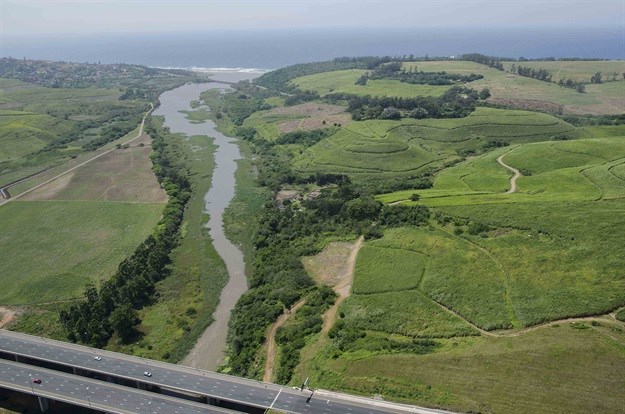Trio partner to develop resilience framework for northern Durban

The key corridor of land identified for this project stretches from the Ohlanga River in the south to the uThongathi River in the north and includes the uMdloti River. It extends inland to the outskirts of Verulam and beyond Tongaat into the Buffels Kloof area.
“The project arose out of an acknowledgement that economic development is key if we are to alleviate poverty, which is an imperative at national, provincial and local government level,” explains Rory Wilkinson, planning director of Tongaat Hulett Developments. “In order to achieve this, cities need to grow in a way that optimises land use, infrastructural provision and promotion of investment which will generate inclusive economic development, while managing the pressure urbanisation places on the natural environment through large-scale land transformation.”
Sustainable approach to development
All parties acknowledge the need for balanced, sustainable development, based on enhancing the ecological footprint and incorporating a process towards obtaining both agreement on the extent of this footprint as well as an approach to development in the region. At the heart of the framework is the effect on degraded wetland habitat in the region, much of which is under sugar cane.
All partners recognise the need for growth and development to overcome poverty and to provide economic upliftment for the community and that this should not come at a cost to the natural environmental assets which need to be preserved, protected and, where possible, enhanced.
“The concept of resilience means that business, government and society generally need to move beyond the concept of sustainable development to the ultimate goal of creating environments that are adaptive to change,” explains Hamish Erskine, CEO of Dube TradePort Corporation. “By building ecosystems that have the capacity to respond to development-induced changes, we will be ensuring that we are creating a lasting impact on the well-being of our people. Our partnership in driving this northern development area is one of the cornerstones of this principle. Our continued efforts need to be integrated and our strategies need to be aligned in order for us to collectively accomplish this goal across our land holdings, which may prove to be a model for development throughout the region.”
Limiting impact on natural environment
In the case of Durban’s northern corridor, resilience means avoiding impacts on the natural environment wherever possible and seeking synergies that lead to enhancement of ecological performance wherever possible. If this is not possible, then impacts need to be mitigated appropriately. The development and preservation of greenbelts in the estuarine regions of the three river systems, referred to as “receiving areas” is key to this mitigation and enhanced resilience. These ecosystems play a critical role in water purification, flood attenuation and maintenance of the area’s natural biodiversity, all of which are important in adapting to the likely negative impacts of climate change.
Consultants BiomimicrySA, Eco-Pulse Environmental Consulting Services and GroundTruth have undertaken studies which have led to the development of a wetland management framework that provides for wetland gains and losses within the existing “mitigation hierarchy” and ultimately, the environmental rehabilitation of these consolidated offset receiving areas to compensate for wetland losses in an area where environmental thresholds have already been exceeded. This, in turn, provides mitigation for where wetlands will be impacted upon by proposed development. The project is a pilot initiative between the three partners, and the learnings from this experience could help to inform how developments and environmental impacts are managed in future.
Proactive rehabilitation
“We are looking to exceed the loss from the developments with proactive rehabilitation and enhancement to reach a position of net gain of environmental functioning in the region,” adds Wilkinson. “This will ensure a solution that addresses the issue of an integrative approach to urban development. Through adopting a holistic rather than piecemeal approach, we can achieve the best ecological functioning and social and economic gains. We envisage the partnership between the eThekwini Municipality, Tongaat Hulett and Dube TradePort as one which creates a joint future for the expansion of the city and its environs.”
























